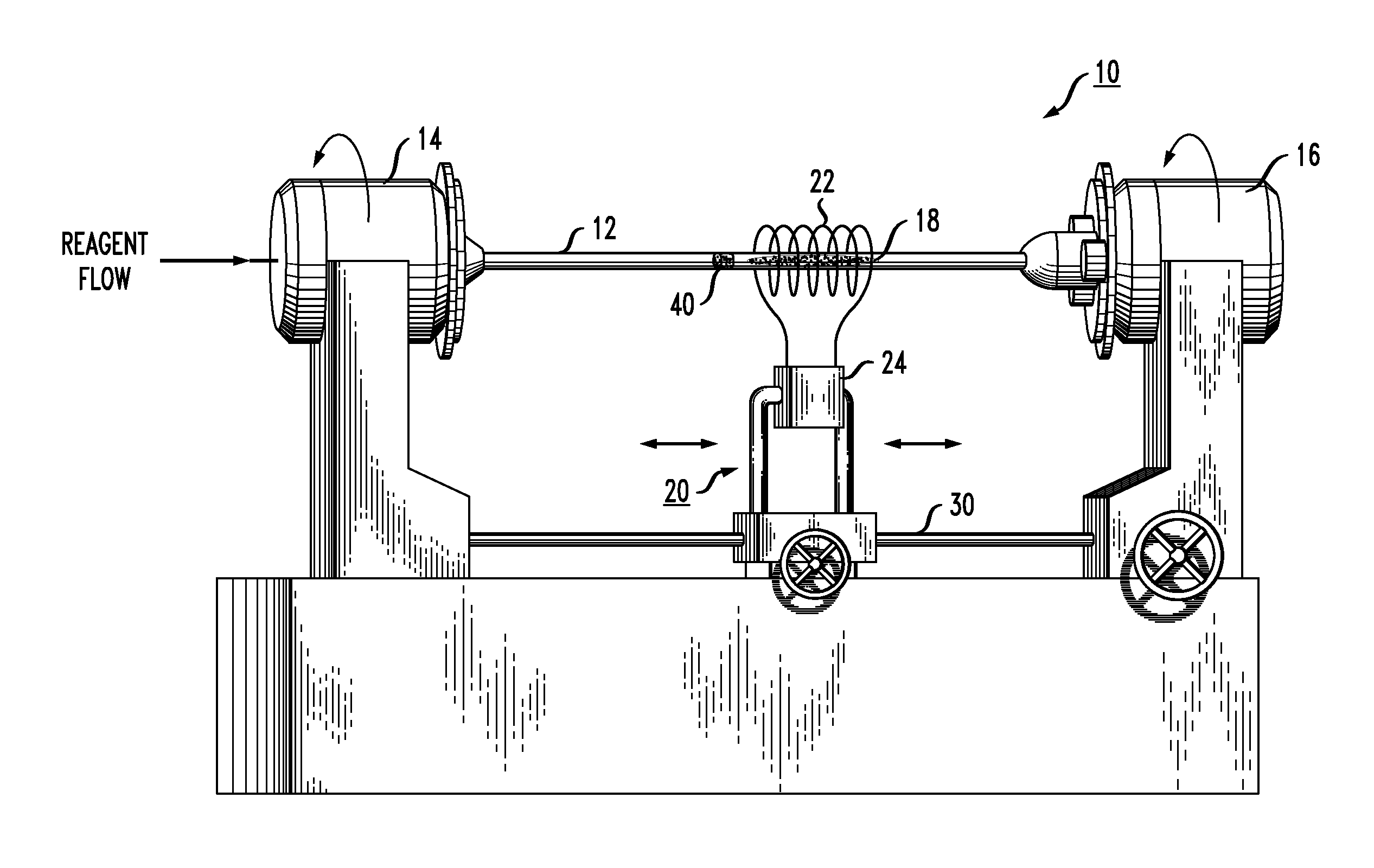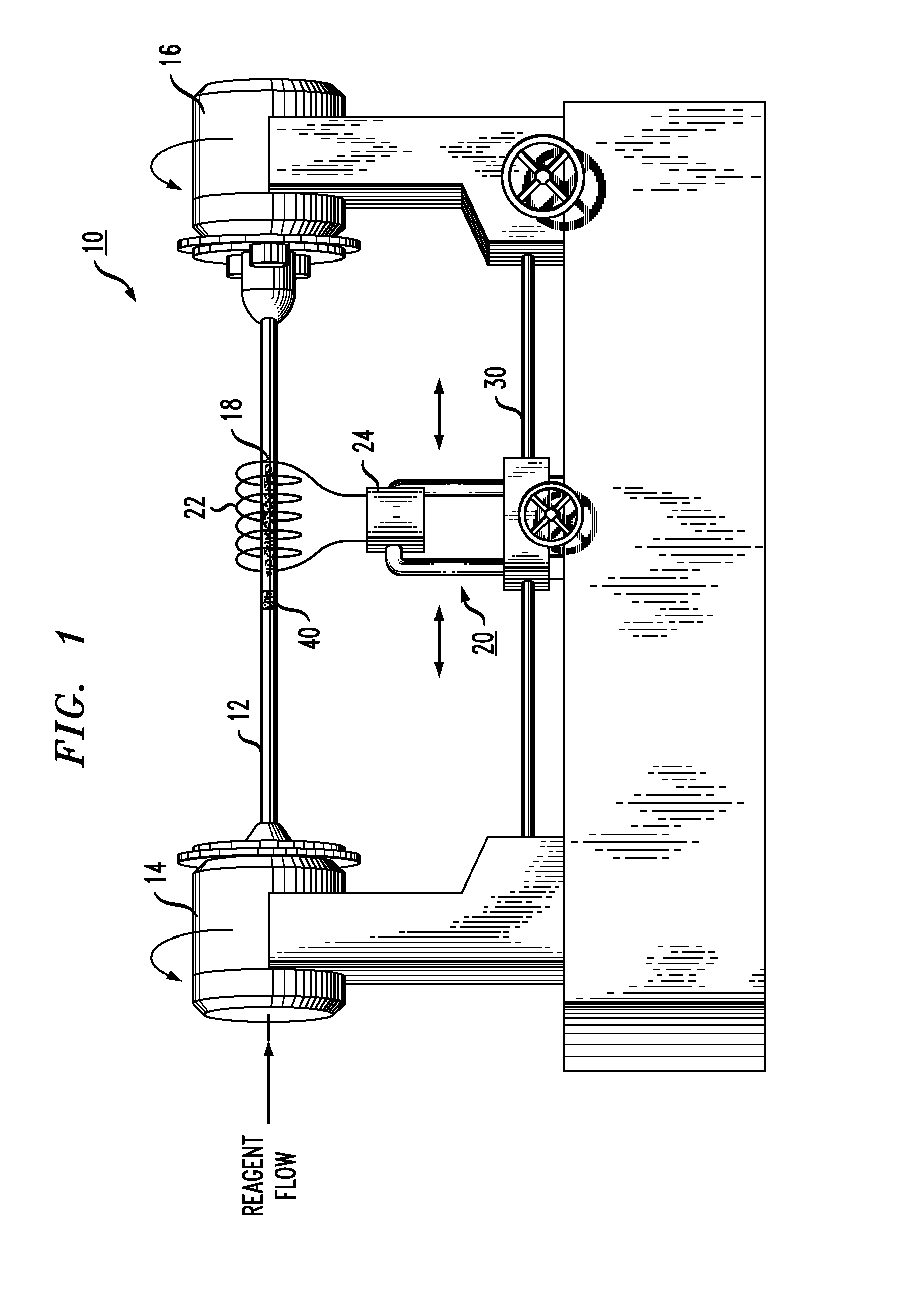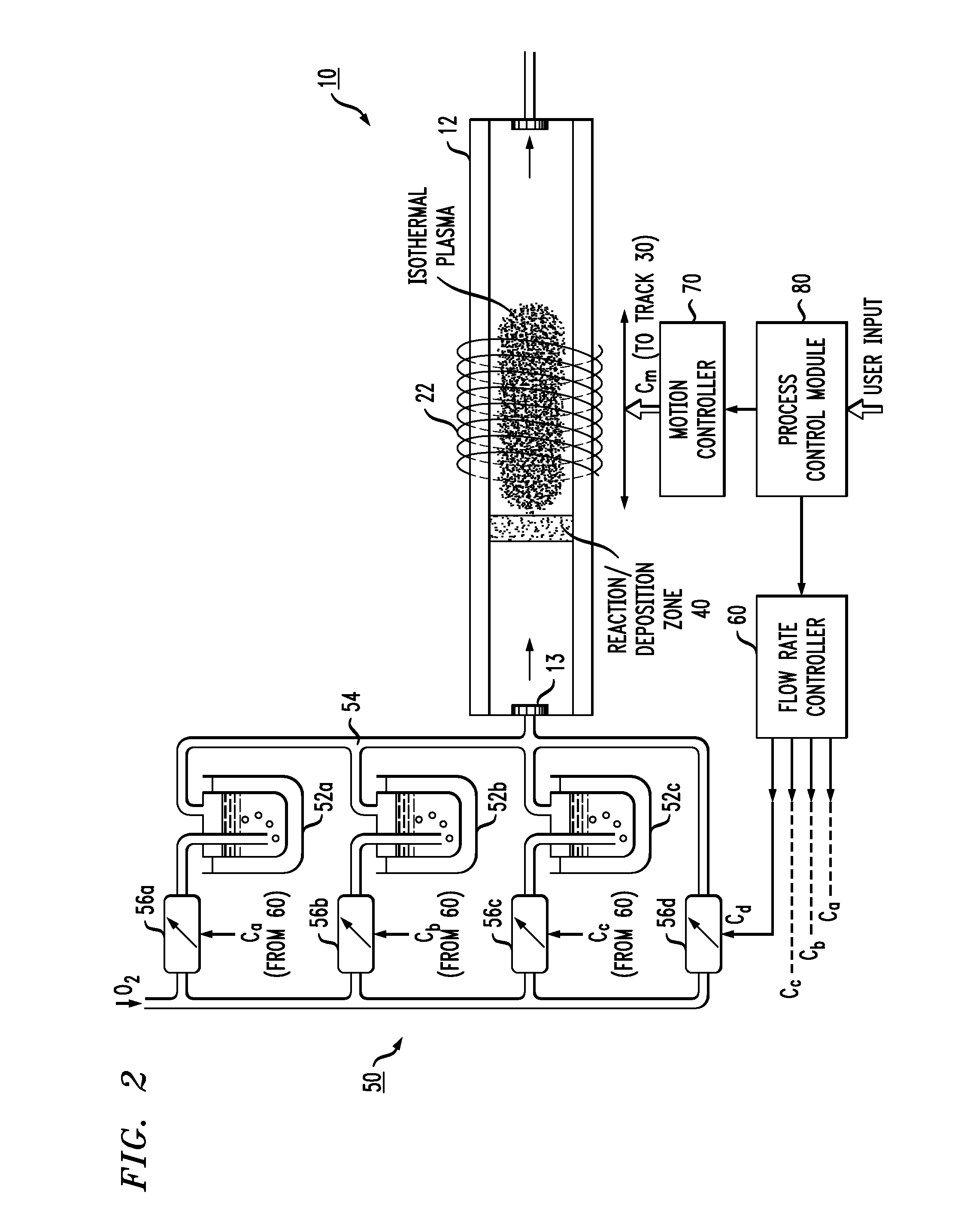Isothermal plasma CVD system for reduced taper in optical fiber preforms
a technology of optical fiber and isothermal plasma, which is applied in the direction of glass deposition burners, furnaces, instruments, etc., can solve the problems of limited ability, inability to make precise, and inability to reduce the creation of unwanted axial non-uniformities. , to achieve the effect of reducing the creation of unwanted axial non-uniformities
- Summary
- Abstract
- Description
- Claims
- Application Information
AI Technical Summary
Benefits of technology
Problems solved by technology
Method used
Image
Examples
Embodiment Construction
[0018]As will be discussed in detail below, the present invention relates to an isothermal plasma CVD apparatus and an associated method of fabricating optical fiber preforms that provides improved axial control of both cross-sectional area and refractive index profile of the preform. The apparatus and method are based upon the use of a low pressure (i.e., less than about 1 atm) isothermal plasma CVD process that creates a deposition hot zone that is narrowly confined to a region within the substrate tube that is immediately “upstream” of the isothermal plasma. The ability to create a narrow deposition zone (which is typically less than 5% of the total length of the substrate tube) allows for continuous modification of the deposition parameters and the ability to quickly respond and adjust the flows of the various constituents as necessary to maintain the desired axial refractive index profile shape. The ability to adjust reagent concentration as a function of elapsed process time a...
PUM
| Property | Measurement | Unit |
|---|---|---|
| length | aaaaa | aaaaa |
| pressure | aaaaa | aaaaa |
| length | aaaaa | aaaaa |
Abstract
Description
Claims
Application Information
 Login to View More
Login to View More - R&D
- Intellectual Property
- Life Sciences
- Materials
- Tech Scout
- Unparalleled Data Quality
- Higher Quality Content
- 60% Fewer Hallucinations
Browse by: Latest US Patents, China's latest patents, Technical Efficacy Thesaurus, Application Domain, Technology Topic, Popular Technical Reports.
© 2025 PatSnap. All rights reserved.Legal|Privacy policy|Modern Slavery Act Transparency Statement|Sitemap|About US| Contact US: help@patsnap.com



